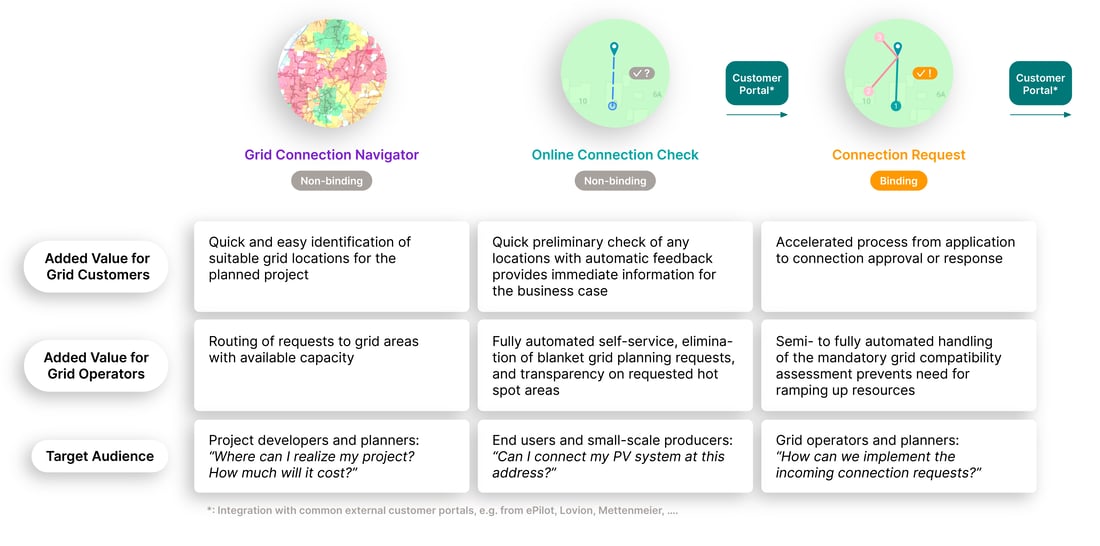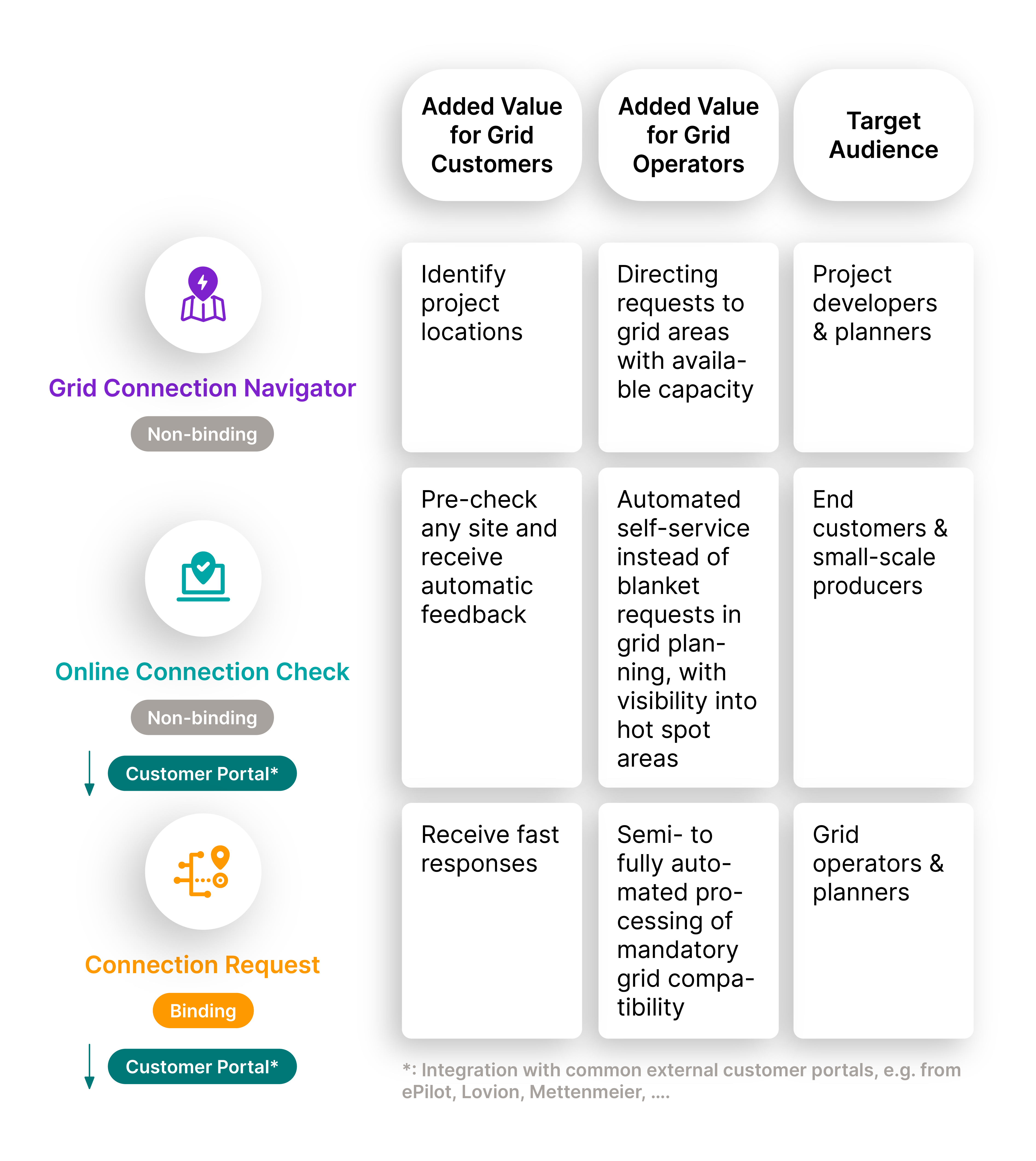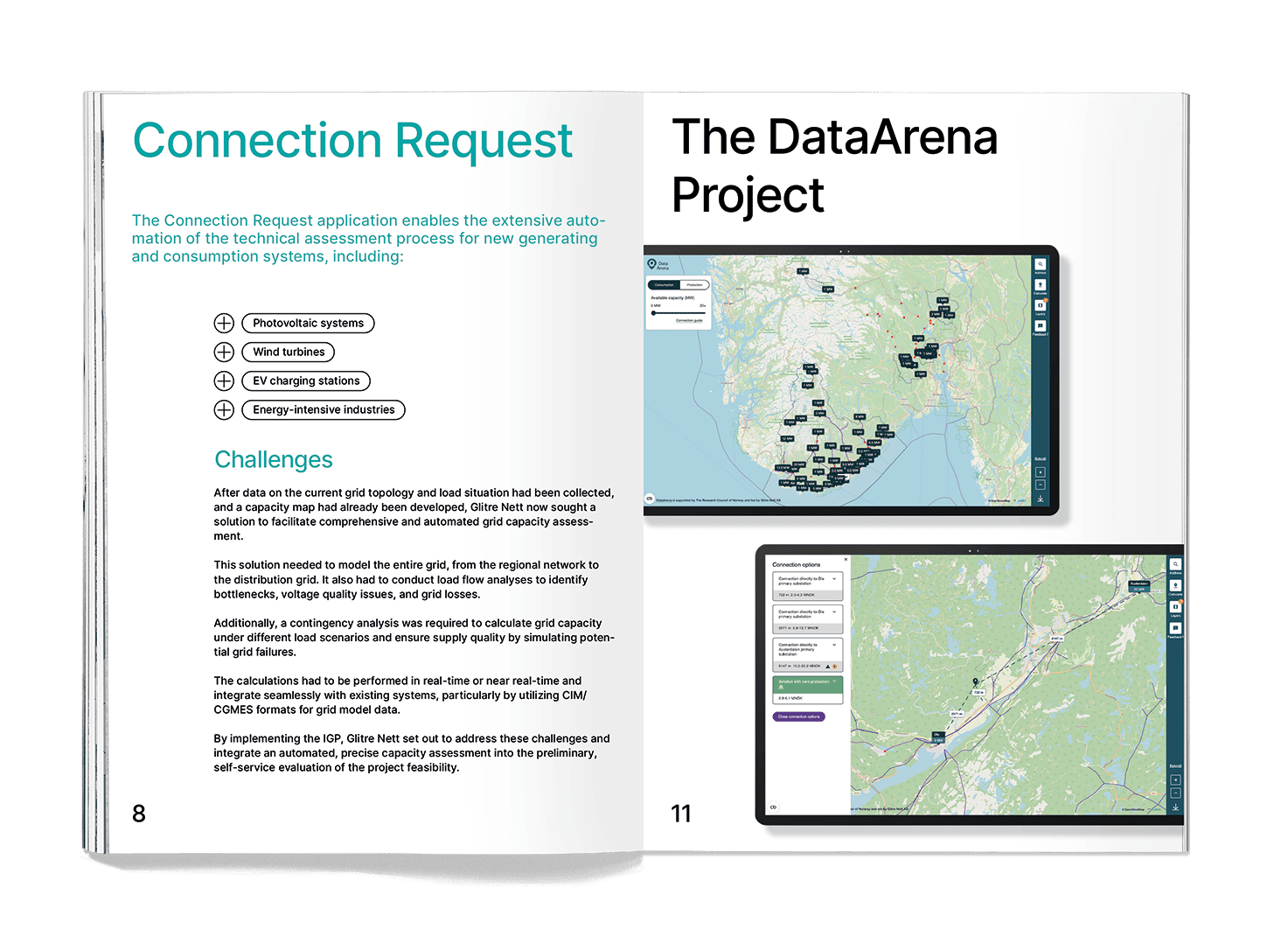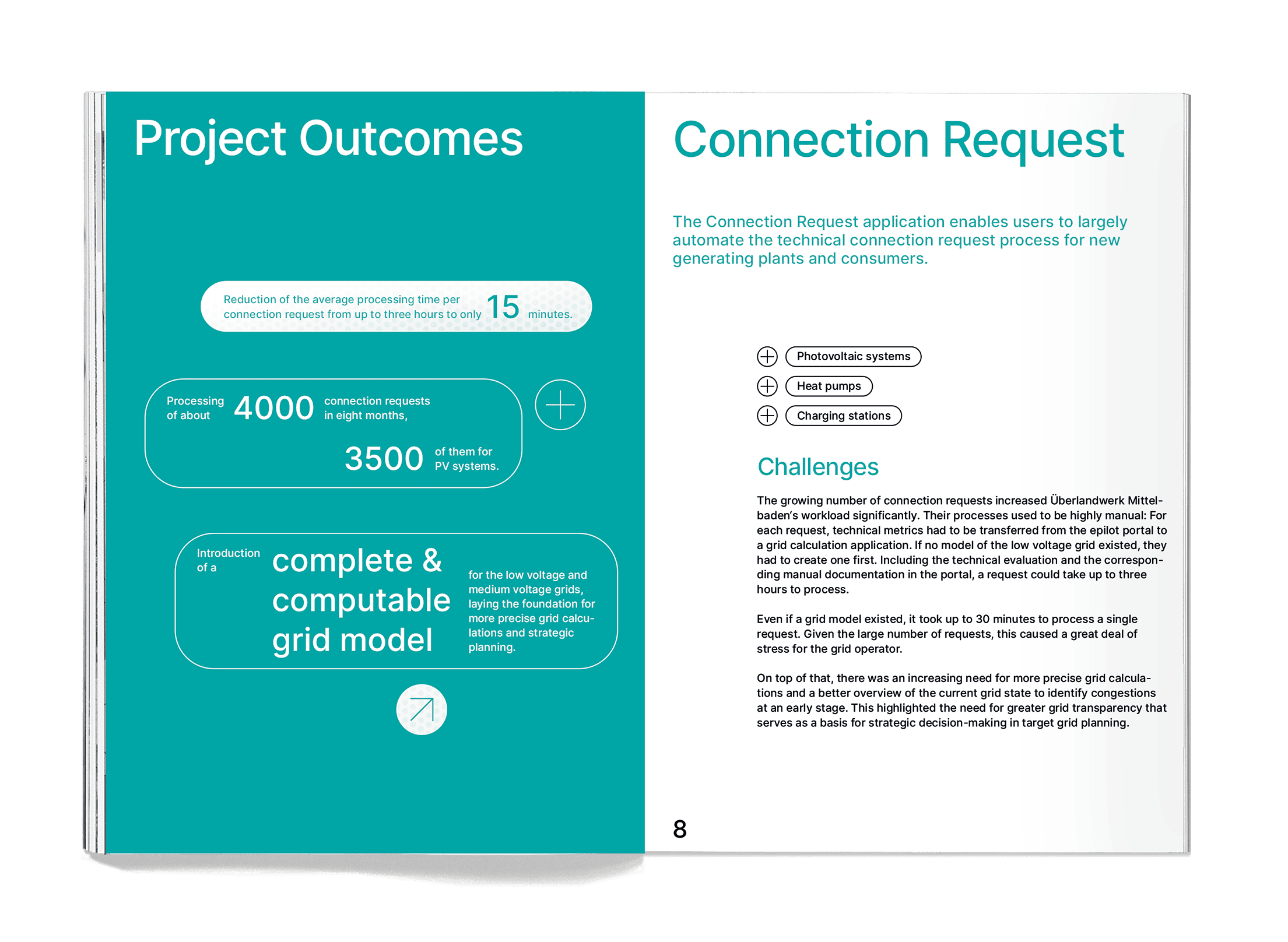Between Uncertainty and Mounting Pressure: The Reality of Grid Connection Processes
Project developers for renewables, large-scale storage systems or data centers often paint a similar picture of the grid connection process, especially in an early planning phase:
- There's a lack of simple and accessible tools for examining the technical feasibility of new projects
- Information on the DSO's website is often incomplete, hard to find or presented in a technically complex way
This results in long waiting times and a lack of cost transparency, causing some projects to fail in the first place.
At the same time, this lack of transparency leads to DSOs facing a flood of requests. Many inquiries lack the necessary quality, while others are not even technically feasible in the first place. Handling these speculative requests ties up valuable planning resources, which are not yet needed at this stage.
Along with the operative challenges, the regulatory requirements for grid operators regarding digitalization, transparency and data provision (as described in the EU regulation 2019/43) have become increasingly complex.
What Project Developers and Distribution System Operators Really Need
|
Project Developers & Connectees:
|
Distribution System Operators:
|
Early Transparency for Everyone Involved
With the Intelligent Grid Platform (IGP), envelio simplifies the entire grid connection process – even before a formal request is submitted. The Grid Connection Navigator (GCN) and Online Connection Check (OCC) provide support when key questions are still unanswered: Is my project feasible? How much will it cost? And where is a connection even worthwhile? Which cases justify in-depth research and, consequently, also warrant a request with the distribution systems operator?
How to check and assess grid capacity
1. The Grid Connection Navigator app offers the full package:
- Interactive map for graphic visualization of available grid capacities
- Pre-selection of possible locations for a planned project
2. The Online Connection Check app allows you to perform detailed evaluations:
- Real-time calculation of grid compatibility at a specific location
- Better evaluation of the business case
Subsequently, specific projects can be submitted to the grid operator via the customer portal for a binding evaluation. This is where the Connection Request application comes into play.


Your benefits:
- Better service for end customers who are planning a grid connection by providing a high level of transparency about the available grid capacities
- Accelerated timelines for new grid connections thanks to a fully digital connection process
- Reduced workload for your planning department thanks to the useful self-service, significantly reducing the number of binding requests that cannot be realized.
Conclusion: From Backlogged Requests to Qualified Inquiries
While end customers and smaller facility operators profit from the fast and intuitive feasibility evaluation and indicative self-declaration, the GCN app supports project developers, land developers and energy consultants in conducting a detailed analysis of possible locations for large-scale projects.The result is a win-win situation: End customers receive reliable information about available capacities and possible connection early on. Grid operators, on the other hand, can reduce the volume of unqualified requests and allocate their resources more effectively to drive the energy transition.
Also interesting:

Case Study: Glitre Nett
Automated grid capacity assessment: How Glitre Nett improves connection processes with DataArena and the IGP
To handle MV grid connection requests more efficiently, Glitre Nett launched the DataArena project – a hosting capacity map for self-service capacity checks. While the map had already been developed by the Norwegian DSO, it lacked an automated method for calculating grid loads and identifying suitable connection points. With the help of the IGP, Glitre Nett implemented this functionality, enabling load flow analyses that also include contingency evaluation. This has reduced the number of inquiries, minimized manual processing, and eased the workload of grid operators.

Case Study: Überlandwerk Mittelbaden
Faced with a surge in connection requests, particularly for PV systems, Überlandwerk Mittelbaden sought to streamline and automate its processes. By integrating the Intelligent Grid Platform (IGP) with the epilot customer portal, the grid operator was able to drastically reduce manual effort. Now, requests that once took three hours are processed in just 15 minutes. Furthermore, the introduction of a fully computable grid model for the low and medium voltage grids has significantly improved transparency, enabling more precise calculations and strategic planning.
Get in touch
If your company too wants to optimize and accelerate their connection request workflows, feel free to contact us. We would be happy to present our solution in a non-binding demo meeting.
Contact person
Dr. Tobias Falke
VP Global Sales & Marketing



